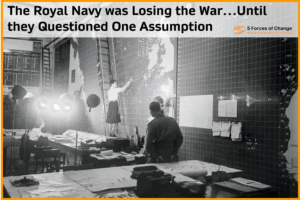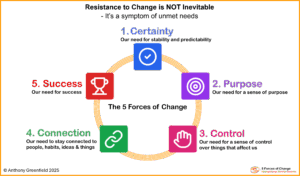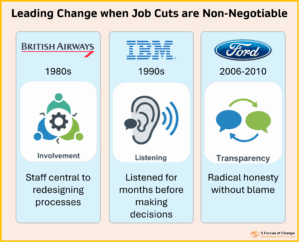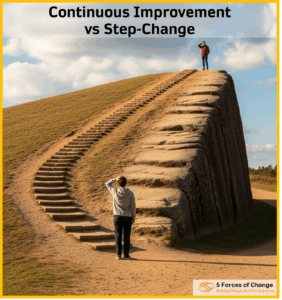For many people change management seems like an invention created to keep consultants and Human Resource professionals in business. They wonder why we need change management now when the world managed without it for so long.
In answer, we can easy point to statistics demonstrating that a large proportion of change initiatives fail to deliver on their promised benefits, and that change is bigger and faster than any time in history. But, whilst this evidence looks compelling, it is still hard for people to grasp the real issues involved in change, which, in practice, means they are unlikely to take it seriously.
So, if you are serious about change management, what can you do to get others to take it equally seriously?
One approach is to wait until things start to go off the rails and then step in on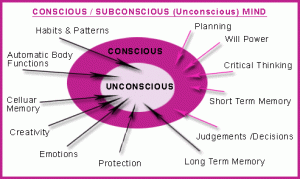 ce people have had their fingers burned. At this point, people are more receptive to being helped, even though they probably don’t appreciate what exactly it is they need help with.
ce people have had their fingers burned. At this point, people are more receptive to being helped, even though they probably don’t appreciate what exactly it is they need help with.
The second way is to facilitate a conversation between people’s conscious and unconscious minds. Our brains work consciously and unconsciously. We weigh up evidence and make decisions using our conscious mind, but we react emotionally to our environment unconsciously (for the most part), using our more ancient brain, the part designed to keep us out of danger and move us towards rewards. It is this unconscious part of our brain that can react negatively to change and it’s functioning is largely hidden from our conscious mind. So we know by ‘gut instinct’ that change can be an unpleasant experience and that that’s why people resist change. What we cannot see is just why this happens.
The good news is that if people learn about the unconscious forces that drive their negative reactions to change they can begin to take control of the situation. They can shape change in such a way as to minimise its negative effects on people and to reduce the tendency to resist change – a habit which lies at the heart of many failed attempts to make change happen.
To learn more about how these fundamental forces operate see ‘The 5 Forces of Change’ at www.5forcesofchange.com


